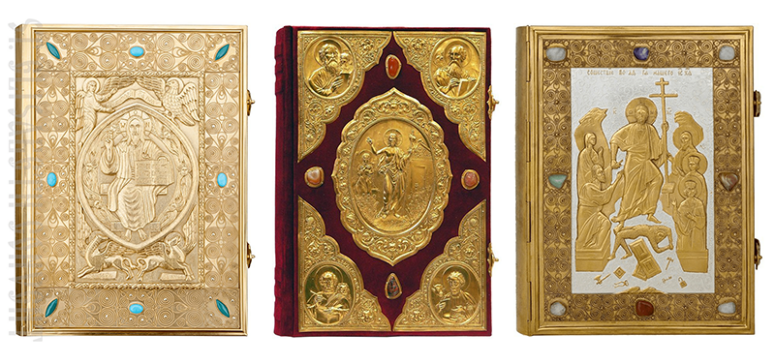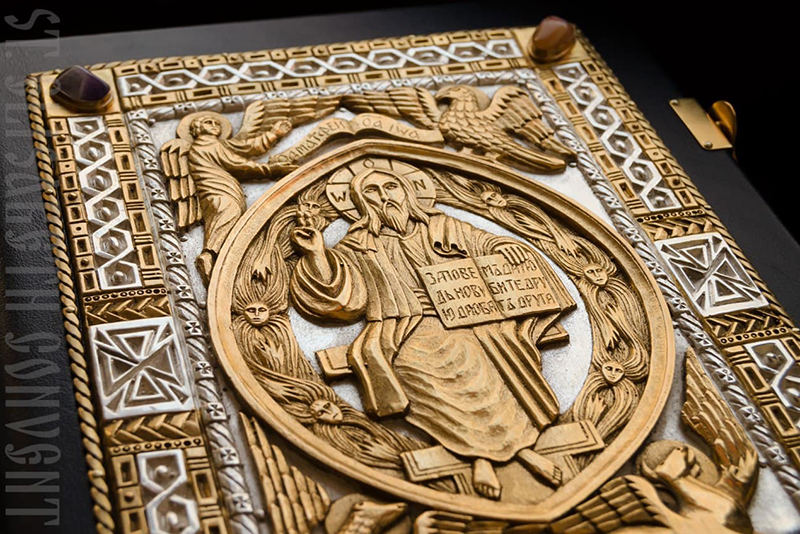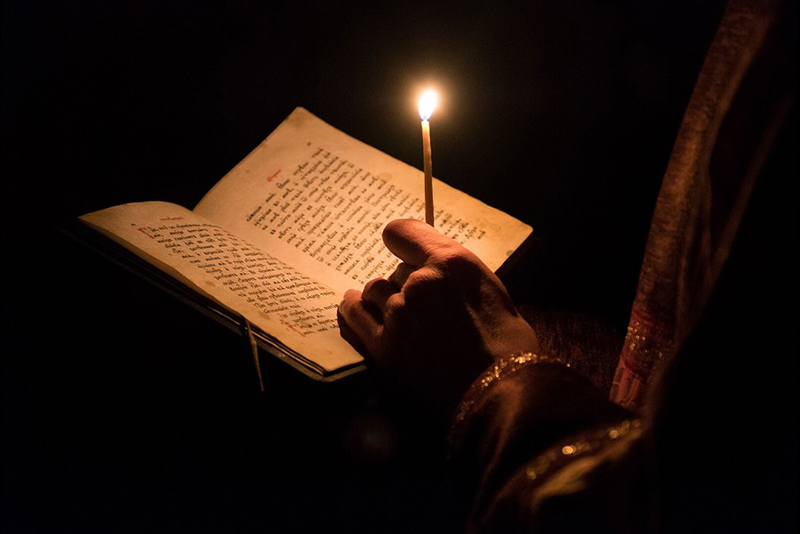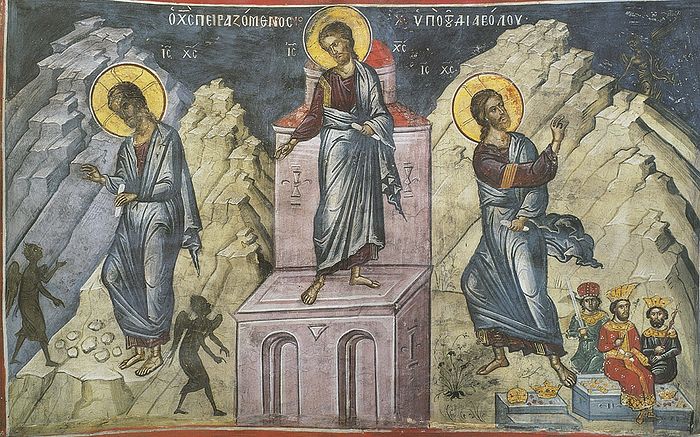
The appearance of manuscripts (which later began to be compiled in books) introduced the challenge of protecting important documents from damage, resulting in the appearance of bindings. Books were of exceptionally high value, because each of them was written artistically by hand. The compound Bible books, particularly the liturgical Gospel and Apostolic Epistles, available for viewing and veneration by believers, were the most prominent ancient volumes. These books were richly decorated, to match the spiritual treasure that they contained. Ancient manuscripts were bound with leather and expensive fabrics, decorated with ivory, enamel, precious stones and pearls, combined with plates and details made of precious metals.
The first large order for expensive liturgical books is mentioned in the Life of St Constantine, written by the historian Eusebius of Caesarea. Around 331, the Equal-to-the-Apostles emperor decided to provide all the churches erected by him with liturgical books. He ordered the production of “50 manuscripts of Holy Scripture on fine parchment, easy to carry and clearly written by professionally trained scribes who had achieved perfection in their art”. The historian mentions these books being “sumptuously bound”.
Unfortunately, these luxurious editions have not been preserved. The covers of the surviving ancient Gospels from both Byzantium and the West are very much on par with the modern ones, both in splendor and workmanship. Creating them involved similar elaborate techniques and ornaments, while the scenes and imagery featured in them are also similar to the modern examples. The oldest surviving Gospel in such an elaborate binding dates back to the 7th century. It belonged to Theodelinda, Queen of the Lombards. Its gold setting is decorated with precious stones, filigree enamel and four cameos. The centerpiece is a cross with flared ends.

Another one of the most famous Western specimens is the ornate binding of the Lindau Gospels. This manuscript, named after Lindau Abbey (Germany), contains the texts of the four Gospels. Its richly decorated setting was made to evoke among Christians the feeling of awe and reverence for this most sacred manuscript. It is worth noting that different parts of the book were created at different times and in different places, which is also reflected in their embodiment.
The reverse side of the cover was made near Salzburg (Austria) in 750–800. The main element here is the cross, expanding towards its ends. It is decorated with gilded silver elements and stones (topaz, garnets). Later (1594) the corners were decorated with four medallions, depicting the Evangelists.
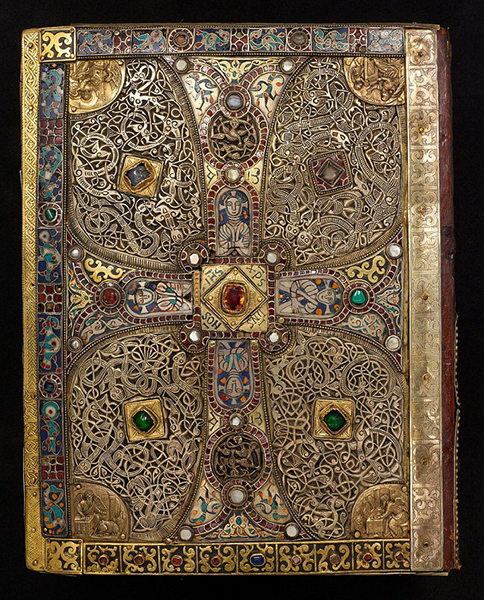
The front cover was completed around 870–880, ten years before the actual manuscript. This piece is made of gold and decorated with multiple semi-precious stones. The gems are deliberately placed on “legs”, slightly raising them above the surface to create a special glow when light illuminates them. The central element of the setting is the Crucifixion. Interestingly, this scene focuses more on the triumph of Christ than His suffering. The plot of Christ’s suffering on the cross will appear on Gospel covers a bit later.
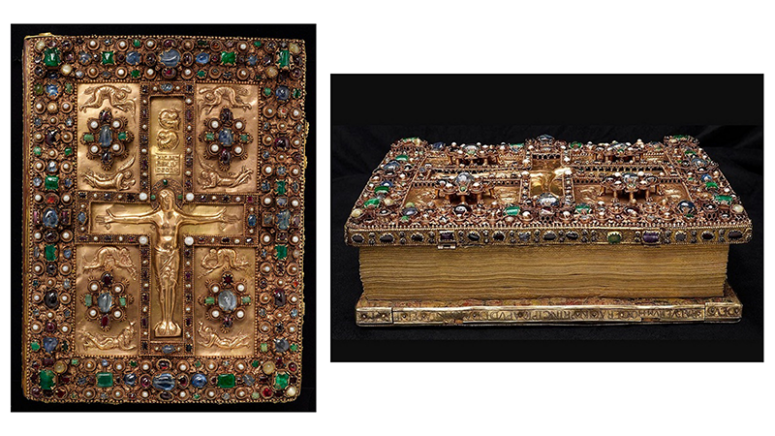
Ivory is also known to be widely used for special overlays, used as decorations for bindings.
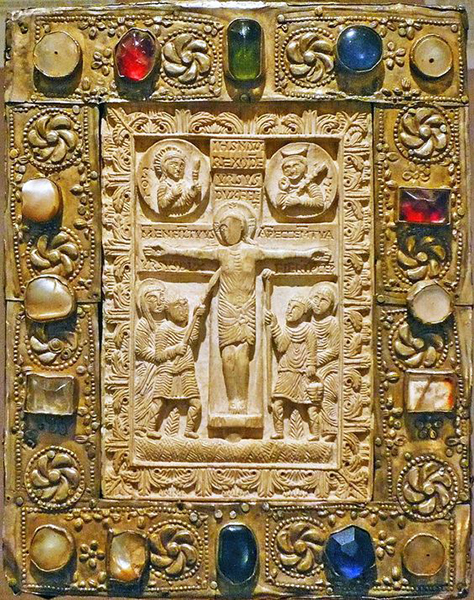
A few other interesting Western and Byzantine Gospel covers (11-13 centuries):
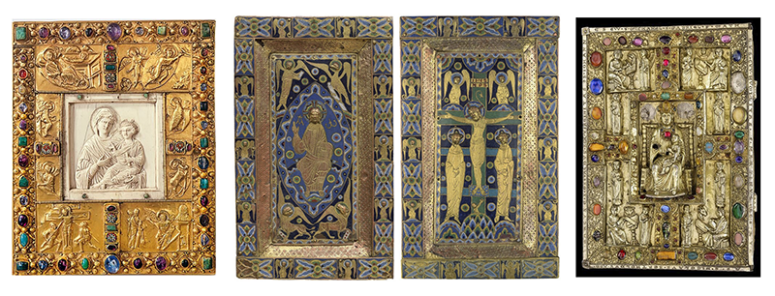
The Byzantine tradition of richly decorating liturgical books was adopted in Russia. One of the earliest examples of Russian bookbinding art is the silver cover of the Gospel of Feodor Koshka (1392). Many complex techniques, such as gilding, engraving, casting, filigree and granulation, were used in its creation. Among other things, this cover is distinguished by a large number of images (the Lord, the Mother of God, apostles and evangelists, angels and saints).
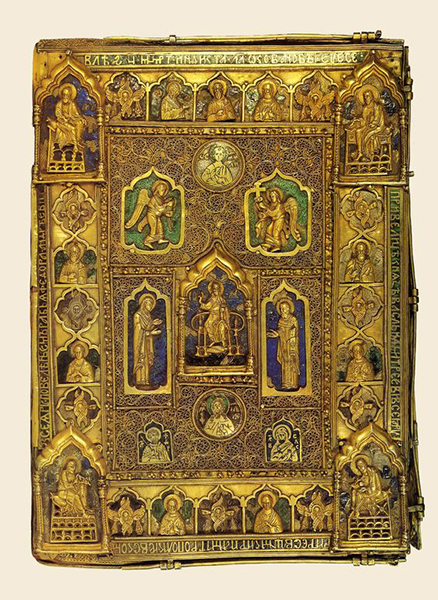
According to the surviving specimens, the Crucifixion or the cross, traditionally used as the central theme in the early Gospel covers, is replaced over time with several other specific images. The most common of them are the Pantocrator, the Resurrection or the Descent into Hell. The less wide-spread include the Golgotha cross and the Most Holy Theotokos.
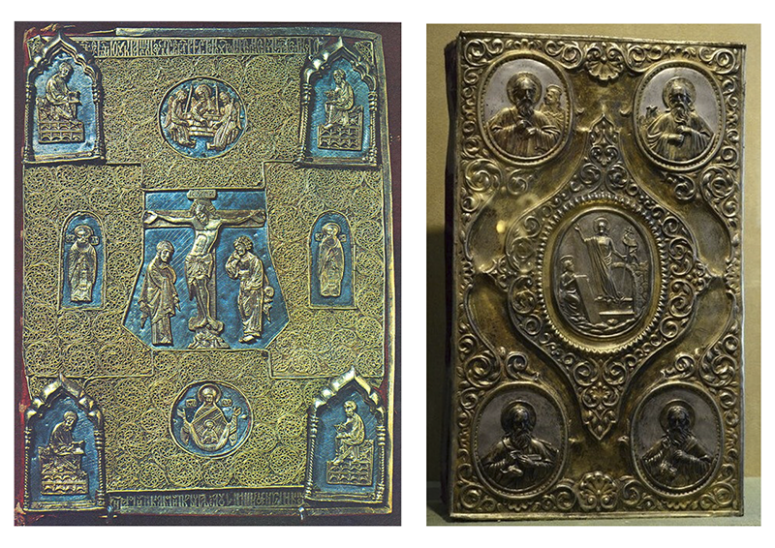
Drawing inspiration from Byzantine patterns, Russian artisans made Gospel bindings using fabrics (leather and velvet), plates and decorative elements, made of expensive metals, and precious stones. A number of remarkable specimens created in Russia have come down to us from the 15-19th centuries.
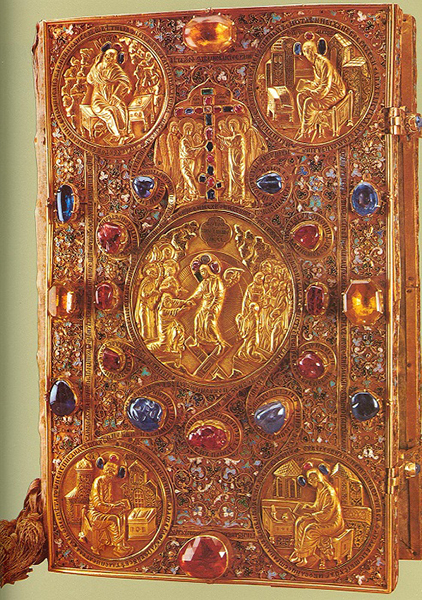

It goes without saying that each such work of church art presumes strenuous work of craftsmen, high cost and limited availability. The modern technical capabilities make it easier to create masterpiece covers in a shorter time, although many elements of this work can still only be done manually. Decorating liturgical books remains a matter of particular importance today, making it possible for modern believers to continue the ancient tradition of giving special reverence to these literary shrines.
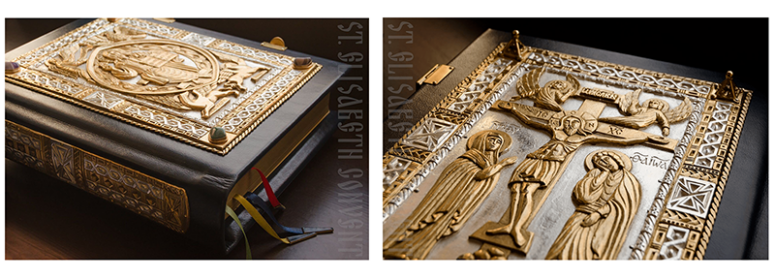
Our non-ferrous metal workshop has been uniting talented artists, chemists and jewellers for over 14 years. Constantly improving their skills, these artisans create church vessels and covers for liturgical books. Some of the used techniques (engraving, embossing, casting, filigree and silver forging) stem from the 10-13th centuries. Some relatively new methods, (electroforming, etching, electrochemical finishing) are also used to create unique products. Our works combine all these techniques with the ancient practice of decorating Gospel covers with semiprecious stones, leather and velvet. Our general rule, when creating any church utensils, is to preserve the traditions, formed by many generations of Christians.
